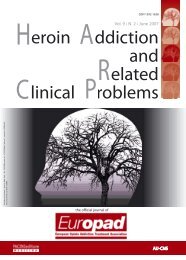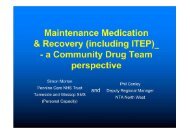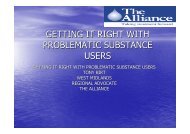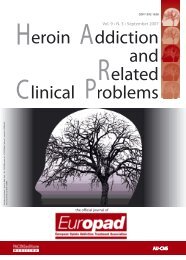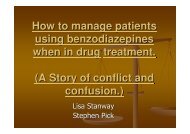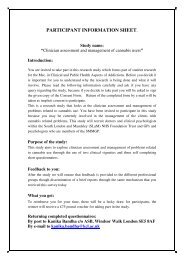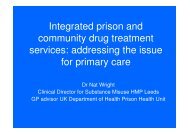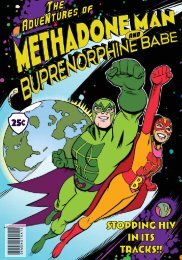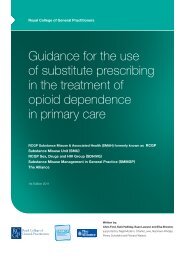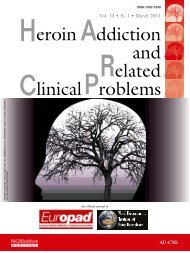cocaine guidance - Royal College of General Practitioners
cocaine guidance - Royal College of General Practitioners
cocaine guidance - Royal College of General Practitioners
- No tags were found...
Create successful ePaper yourself
Turn your PDF publications into a flip-book with our unique Google optimized e-Paper software.
5Guidance for working with <strong>cocaine</strong> and crack users in primary careA user may present as a medical emergency:■ Overdose (or the after-effects <strong>of</strong> an overdose)■ Acute asthma attack, chest pain, palpitations ormyocardial infarction■ Mental health crisis: paranoia, depression, suicidethreat or attemptEarly identificationLess acutely and while not an emergency, a patient maypresent with a particular set <strong>of</strong> symptoms includingbreathing problems, worsening asthma, hypertension,weight loss, mental symptoms or chest pains. Withoutself-disclosure, it can be difficult to identify <strong>cocaine</strong> useat an early stage, but if the patient is honest in this respect,then they should not be judged for their drug use. Lookat lifestyle and the underlying needs <strong>of</strong> the user.The primary crack userA person may present who already has a problemwith crack.■ Need to look at reasons why presenting now.■ Need to do a risk assessment, especially to assessrisk <strong>of</strong> suicide and violence.■ Need to engage quickly – same or following dayappointments because (unlike, say opiate users)crack users may present in a state <strong>of</strong> high anxiety,needing rapid intervention.■ Need to engage the patient and develop arelationship such that the user feels able to return.■ Engage through other means such as harmreduction advice or health problems.■ Not always crucial to focus on the drug and the usermay not want their crack use to be targeted.May need to focus on the presenting symptomssuch as cough, dyspnoea, burns etc.■ Need to think about a plan <strong>of</strong> action.■ Think about empathy and non-punitive engagement,but be prepared to say you don’t know whenyou don’t.User already in treatment for anotherdrug problem e.g. opioid dependence■ The user may present <strong>cocaine</strong> as a new problem,or changes in physical health may draw it toyour attention.■ Cocaine may show up on random urine testing orbe noted at regular review appointments.■ Assess the extent <strong>of</strong> the problem and what the userwould like to do about it, if anything.■ Proceed with the assessment outlined below.■ Crack itself can heighten self-belief and even produceideas <strong>of</strong> grandeur. These can be misinterpreted ascockiness or rudeness.Assessment for first presentationOn the first visit, the patient should receive an initialassessment, which identifies problems and immediateneeds. Following this, work should be carried out toestablish if the patient is accessing any other services.If so, and with the patient’s consent, the other servicesinvolved in their care should be contacted and a leadcare coordinator appointed to make sure that duplication<strong>of</strong> any work is minimised and the patient receives a carepackage suitable to their needs.The assessment is similar to other patients whopresent with drug problems:■ Current drug and alcohol use.■ Useful to ask about a ‘typical using day’ and a ‘typicalusing week’ (this can help to establish stereotypicalpatterns <strong>of</strong> drug use that might otherwise appearharmless or innocuous to the <strong>cocaine</strong> user). It alsoidentifies runs <strong>of</strong> drug use and binge patterns thatcan be usefully addressed in treatment sessions later.It also helps to establish the depth <strong>of</strong> ‘harmful use’versus ‘dependent use.’■ Method and route <strong>of</strong> use <strong>of</strong> drugs.■ Drug and alcohol history including previous treatmentPhysical health:■ Current and past medical history including changein weight, breathing problems, chest pains andsexual health



